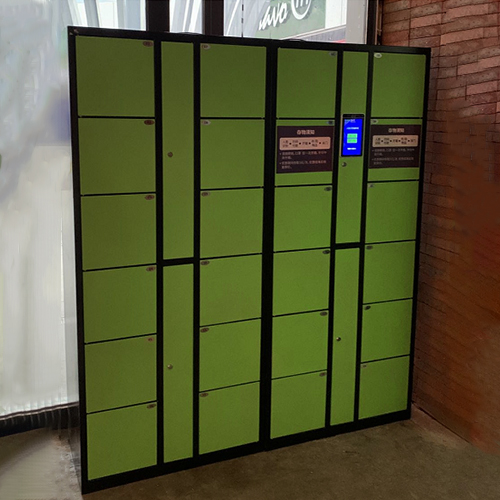Facial recognition technology has rapidly evolved in recent years, becoming an integral part of modern security and automation systems. One of its innovative applications is the facial recognition cabinet, a smart storage solution that uses biometric authentication to grant access to authorized users. These cabinets are widely used in industries such as healthcare, finance, defense, and corporate offices, where secure and efficient access control is crucial.
This article explores the functionality, benefits, applications, and challenges of facial recognition cabinets, providing a detailed understanding of their role in modern security infrastructure.
---
1. How Facial Recognition Cabinets Work
A facial recognition cabinet operates using advanced biometric technology to verify a user's identity before granting access. The key components and processes include:
1.1 Hardware Components
- High-resolution Camera – Captures facial images for recognition.
- Infrared Sensors – Enhance accuracy in low-light conditions.
- Processing Unit – Runs facial recognition algorithms (often AI-powered).
- Locking Mechanism – Electromagnetic or mechanical locks that open upon authentication.
- Storage Compartment – Securely holds sensitive items (documents, medications, weapons, etc.).
1.2 Software & Algorithms
- Face Detection – Identifies and isolates facial features from an image.
- Feature Extraction – Analyzes key facial landmarks (eyes, nose, jawline).
- Matching & Verification – Compares the captured face with stored templates in a database.
- Access Control Logic – Decides whether to grant or deny access based on recognition results.
1.3 Authentication Process
1. User Approaches the Cabinet – The camera scans the face in real-time.
2. Image Processing – The system extracts facial features and compares them with authorized profiles.
3. Access Decision – If a match is found, the cabinet unlocks; otherwise, access is denied.
4. Logging & Alerts – Some systems record access attempts and notify administrators of unauthorized entries.
---
2. Key Benefits of Facial Recognition Cabinets
2.1 Enhanced Security
- Eliminates risks associated with lost keys, stolen access cards, or shared passwords.
- Reduces human error in identity verification.
2.2 Convenience & Speed
- No need for physical keys or PINs—access is granted instantly upon recognition.
- Ideal for high-traffic environments like hospitals and offices.
2.3 Contactless Operation
- Hygienic solution, especially in medical and laboratory settings.
- Reduces wear and tear compared to traditional locks.
2.4 Audit & Accountability
- Maintains logs of who accessed the cabinet and when.
- Useful for compliance with regulations (HIPAA, GDPR, etc.).
2.5 Scalability & Integration
- Can be integrated with existing security systems (CCTV, alarms, biometric databases).
- Supports multi-factor authentication (face + PIN or RFID for added security).
---
3. Applications of Facial Recognition Cabinets
3.1 Healthcare & Pharmaceuticals
- Secures controlled medications, patient records, and lab samples.
- Prevents unauthorized access to narcotics and sensitive equipment.
3.2 Corporate & Government Offices
- Protects confidential documents, financial records, and intellectual property.
- Used in military and defense for weapon storage.
3.3 Retail & Banking
- Safeguards cash, valuables, and sensitive customer data.
- Used in ATMs and safe deposit boxes.
3.4 Smart Homes & Hotels
- Replaces traditional safes with biometric security.
- Enhances guest experience in luxury hotels.
3.5 Education & Research Facilities
- Secures exam papers, research data, and expensive lab equipment.
---
4. Challenges & Considerations
4.1 Privacy Concerns
- Facial recognition raises ethical debates about data collection and surveillance.
- Compliance with privacy laws (e.g., GDPR, CCPA) is essential.
4.2 Accuracy & Bias
- Lighting conditions, facial expressions, and ethnic diversity can affect recognition rates.
- AI models must be trained on diverse datasets to minimize bias.
4.3 Cybersecurity Risks
- Hackers may attempt spoofing attacks using photos or deepfakes.
- Encryption and anti-spoofing measures (liveness detection) are necessary.
4.4 Cost & Maintenance
- Higher initial investment compared to traditional lockers.
- Requires periodic software updates and hardware maintenance.
---
5. Future Trends & Innovations
- AI-powered liveness detection to prevent spoofing.
- 3D facial recognition for higher accuracy.
- Cloud-based facial recognition for remote access management.
- Integration with IoT for smart office and home automation.
---
Conclusion
Facial recognition cabinets represent a significant leap in secure storage solutions, combining biometric aut




















 WhatsApp
WhatsApp Phone
Phone